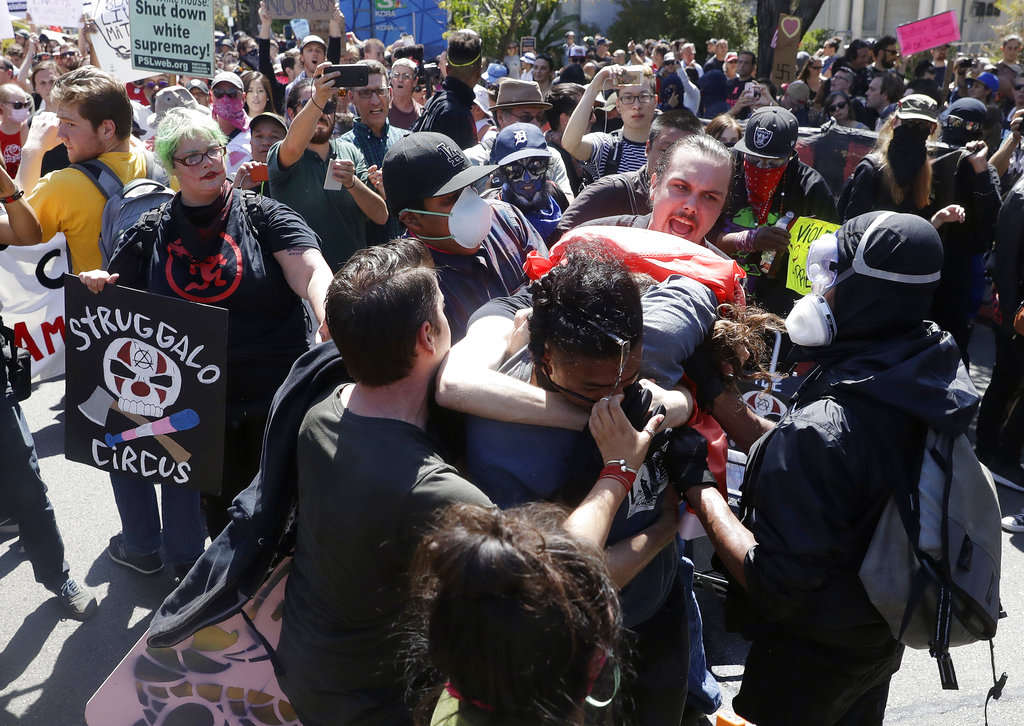A hand-illustrated book on Bay Area butterflies, a monograph of paintings by a founding member of the region’s underground comics movement, a scholarly work that explores the effects of sexual violence and slavery on present-day Black culture, Kitty Stryker‘s memoir cum handbook on protesting and Jeff Chang’s fourth book, on Bruce Lee, are among six new books with Berkeley connections.
A column on books in Berkeley.
Nonfiction“Love Rebels: How I Learned to Burn it Down Without Burning Out” by Kitty Stryker
Thornapple Press, 190 pages, $25
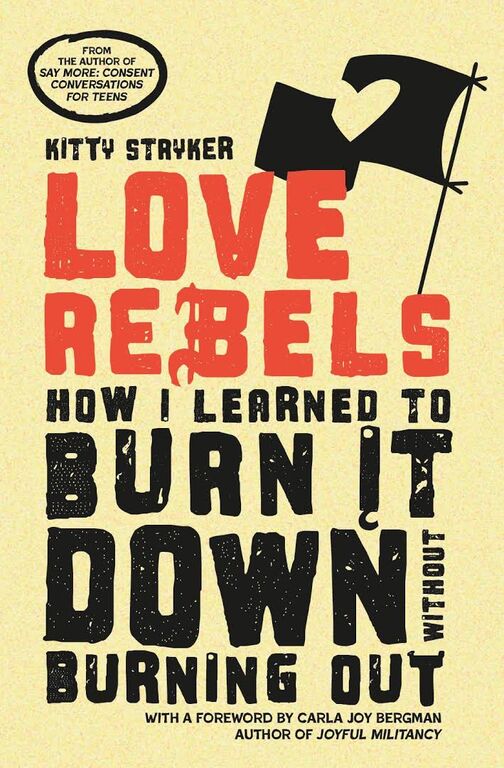
In her new book, “Love Rebels: How I Learned to Burn it Down Without Burning Out,” due Oct. 17, Kitty Stryker urges readers to strike a balance between their activism and their personal lives — something she knows about quite well.
As a toddler, Kitty Stryker went to NOW rallies and violence against women protests with her activist parents. In her 41 years she has attended so many demonstrations, she stopped counting.
Stryker describes her new book as part call to action and part memoir. The memoir part at times reads like a cautionary tale based on her own multiple burnouts.
“It can get really overwhelming,” she said. “There are so many things that require action and attention. So it’s hard to pick and choose what you’re going to focus on.”
One of her worst burnouts was after the Berkeley protests of 2017, which drew right-wing groups like the Proud Boys to Berkeley and pitted them against UC Berkeley students and leftist groups, resulting in street clashes, injuries and numerous arrests. For weeks she volunteered as a street medic.
“It was traumatic, but I felt like if I’m not doing this, who’s going to do it?” Stryker said. She said she pushed her body too hard, getting knee and ankle injuries from pounding the pavement and being hit by non-lethal rounds from police.
The book offers practical tips on what to do before, during and after a protest and how to organize and create leadership and accountability in an activist group. She admitted that street-level activism isn’t for everybody and provides alternatives, like letter writing, showing up at government meetings and canvassing neighbors.
“What it gets down to is interpersonal relationships,” Stryker said, “and figuring out ways that everybody can feel like they can contribute.”
Stryker will talk about her book at 8 p.m. on Monday, Oct. 20, at The Long Haul in South Berkeley. A former sex worker, her previous three books have focused on consent within queer relationships.
“Water Mirror Echo: Bruce Lee and the Making of Asian America” by Jeff Chang
Harper Perennial, 560 pages, $29
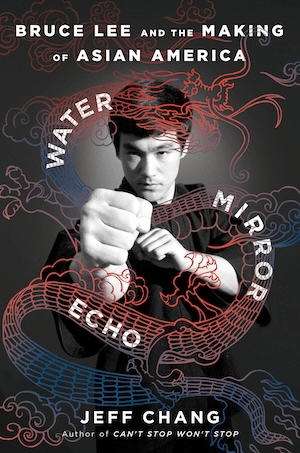
During a surge of anti-Asian violence in the pandemic, murals of Bruce Lee, the film star and martial arts fighter who died at the age of 32, began appearing in San Francisco’s Chinatown, then Oakland’s, then New York’s and elsewhere across the country.
The Berkeley author Jeff Chang, who writes about the intersection of pop culture and race, took note. He had been working on a biography of Lee.
“We were all feeling very vulnerable and were looking for hope,” said Chang. “He became this symbol of pride and strength and solidarity and unity.”
That cultural moment influenced his storytelling. “I realize now that Bruce’s story has been framed as an American story in the past, but it’s a uniquely Asian American story,” he said.
Chang’s new book, “Water Mirror Echo: Bruce Lee and the Making of Asian America,” examines Lee’s life through that lens, which has come more into focus through hindsight and the Asian American activism that the pandemic revitalized.
Chang will be in conversation with KQED’s Alexis Madrigal at 6:30 p.m. on Oct. 28 at Local Economy in Oakland. At 7 p.m. on Nov. 5, Chang will be at the Oakland Asian Cultural Center.
Though American born, Lee grew up in 1950s Hong Kong, when a kung fu craze gripped the city. Because he had been getting into too many fights, his parents suggested he head to the U.S. Stateside, he spent time in San Francisco, Oakland and Seattle, living in racially segregated communities with African Americans, Latinos, Japanese Americans and poor whites.
“He’s learning what it means to be a racialized American in America,” Chang said. “This is what turns him from a spoiled kid to someone who represents the underdog.”
Unable to break into films in the U.S., he returned to Hong Kong in 1971 and became a box-office star who played the role of the underdog. He continued that role in his first big Hollywood film, “Enter the Dragon,” but also had to push back against an attempt to turn his character into a villain, an Asian stereotype, Chang said. Instead, Lee insisted that scenes glorifying Asian philosophies and martial arts be incorporated into the film.
“He really put it on the line,” Chang said. “He didn’t want to put out anything that made him or folks who look like him bad.”
“Water Mirror Echo” is Chang’s fourth book. His last, Can’t Stop, Won’t Stop, is considered a seminal work on the history of hip-hop and won an American Book Award in 2005. The subject matter parallels Lee’s story.
“I’m attracted to these stories of outsiders,” Chang said, “usually kids who create these things and then go out and change the world.”
“Engendering Blackness: Slavery and the Ontology of Sexual Violence” by Patrice D. Douglass
Stanford University Press, 352 pages, $32
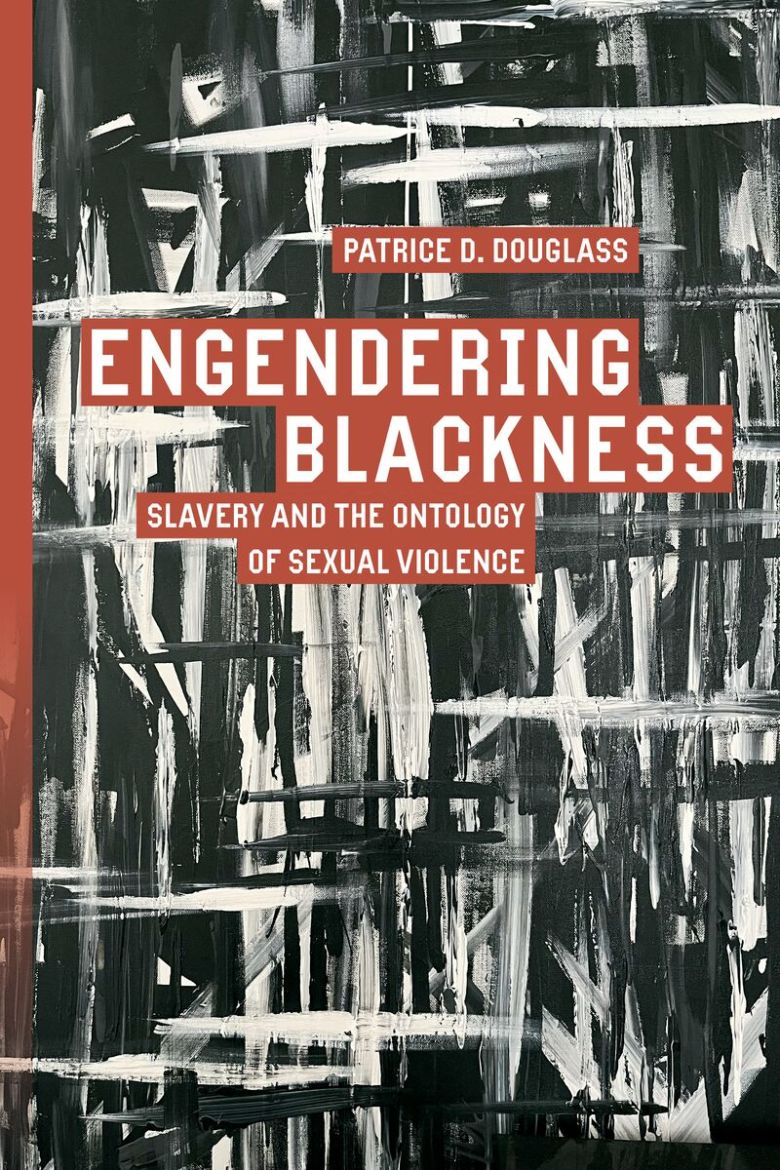
Berkeley native Patrice D. Douglass is celebrating the publication of her first, “Engendering Blackness: Slavery and the Ontology of Sexual Violence.” The book explores the relationship between sexual violence and modern racial slavery and its effect on Blackness in the current day.
Douglass received a Ph.D. from UC Irvine in culture and theory. She is now an assistant professor of gender and women’s studies at UC Berkeley and lives in El Cerrito. Her work centers on Black feminist theory and philosophy.
In the book, Douglass highlights two art works associated with Berkeley that represent a long history of Black political struggle. The first is Betye Saar’s Liberation of Aunt Jemima from 1972, which she submitted to an open call for Black art from the Rainbow Sign, a legendary Black community center in Berkeley.
“Aunt Jemima in general has been a center of controversy around racist iconography and its relationship to political struggle,” Douglass said, “a figure that is void of a personal narrative.”
The second work, “Crossings,” is by the Berkeley artist Mildred Howard and was part of her solo exhibition at the Berkeley Arts Center in 1997. The conceptual work depicts rows of eggs on the floor that make a square and is reflected in a gilded mirror on the wall, evoking the middle passage and slavery.
“Both works illustrate the rich cultural history in Berkeley, where people were reproducing imagery of life and struggle and activism,” Douglass said. “Additionally they help us to visualize the scope of slavery and to take that visual marker and translate it into a more complex theory and set of questions.”
Douglass plans to write a book on her hometown’s Black history, which often gets less attention than Oakland’s. She intends on devoting a chapter to reconciling the ways these neighboring cities are seen as “separate and distinct racial geographies.”
“Borders are murky and vexed,” she said, “such that Oakland and Berkeley’s Black histories have important connections and overlaps, as well as their own roles in shaping the Black political history of the Bay Area.”
“Butterflies of the Bay Area (and Slightly Beyond)” by Liam O’Brien
Heyday, 368 pages, $50
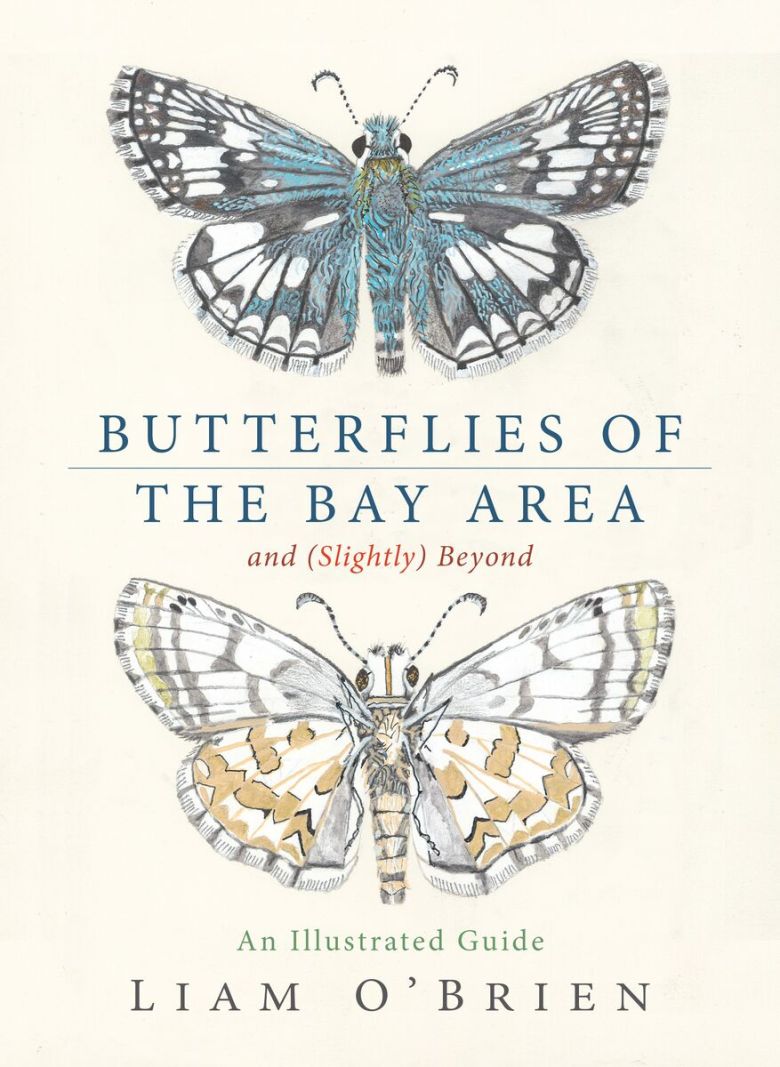
When butterfly hunting in Berkeley, Liam O’Brien suggests that residents look not to the flowers, but the trees, in particular the Quercus agrifolia, or coast live oak. There, in the canopy, you can spot the region’s most common butterfly, the California Sister, a black species dotted with white and orange, that lays its eggs in the oak.
The California Sister can also be found in all her full-color glory in O’Brien’s new book, “Butterflies of the Bay Area (and Slightly Beyond),” which chronicles 135 varieties and contains more than 700-hand-drawn illustrations that represent the breadth and beauty of the region’s butterfly biodiversity.
Each entry contains info on habitats, host plants, life phases and where to find each species. O’Brien also recommends the best butterfly walks in the Greater Bay Area. In Berkeley, he suggests Volmer Peak, the UC Berkeley and Tilden botanical gardens and Claremont and Wildcat canyons.
A self-taught lepidopterist and illustrator, O’Brien came to the field after acting on Broadway in “Les Miserables.” In 1996, when performing the lead role of Prior Walter in the West Coast premiere of “Angels in America,” a Western Tiger Swallowtail flew into his San Francisco backyard.
“I was so fascinated by how close I could get to it,” he said. “By the end of the week, I bought a butterfly field guide and joined the Lepidopterist Society soon after that.”
Since then he has led efforts to restore the Variable Checkerspots to the Presidio, monitored the endangered Mission Blue butterfly in the Marin Headlands, run the San Francisco butterfly count for the last 25 years and participated in the Berkeley counts for at least 20 years. Bay Nature magazine named him a Local Hero in 2014.
Fiction“Scabmuggers” by Yvonne Martinez
She Writes Press, 105 pages, $18
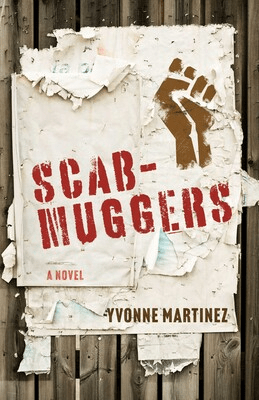
Yvonne Martinez’ memoir, “Someday Mija, You’ll Learn the Difference Between a Whore and a Working Woman,” was titled after what her grandmother said after she and her fellow sex workers busted up a tavern after the owners tried to cut into the women’s tavern sex trade.
As a child, Martinez had no idea what Grandma Mary was talking about, but “I would later learn what that meant in my work as a labor negotiator and organizer,” she said.
Her latest book, “Scabmuggers,” named after the turn-of-the century women who patrolled picket lines and deterred scabs, pays homage to the activism of tough working women like her grandmother.
“Scabmuggers” is a novel based on a true story — heavily based on Martinez’ real-life experience as a fellow in the Harvard Trade Union Program in 1994.The program brings together labor leaders from around the world to study and share their grassroots knowledge.
With high hopes for an amazing educational experience, the protagonist, Simone, instead discovers that the problems within the labor movement itself — sexism, racism and homophobia — will divide the group into two warring factions, mostly along gender lines. A high-brow educational experience by day descends into boozy, out-of-control debauchery by night.
Ana, a white female, is stalked. A Japanese man is encouraged to dress and act like a geisha. Mindy makes the rounds kissing a group of men before being carried off by one of them. As for Simone, one of the few men she trusts ends up groping her.
Simone and her cohort inform the program leader as to what’s going on, but she decides not to get involved. The only way out, Simone and company discover, is through their own moxie — and well-oiled negotiating skills.
Kirkus Reviews calls the book “an engrossing fictional examination of challenges women face in reform movements in the world and at large.”
Martinez has sent a copy of the book to the Harvard Trade Union Program, but has not yet heard back.
Art“Go Figure: Figurative Social Surrealist Paintings” by Guy Colwell
Fantastagraphics, 90 pages, $30
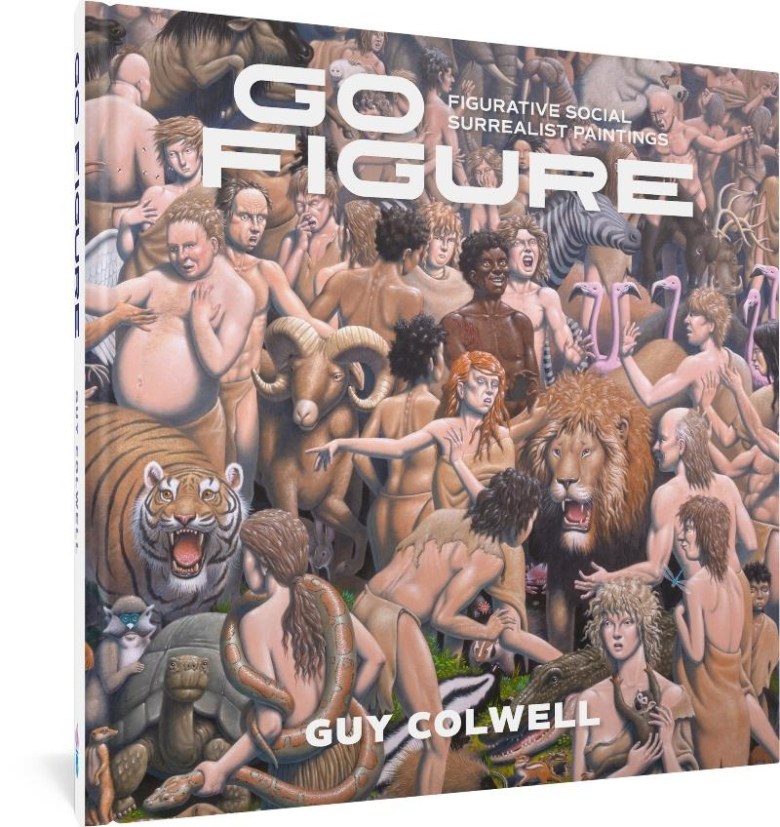
Guy Colwell is well aware of the effect his paintings can have on gallery owners. They often compliment his work but back away from exhibiting it because it probably won’t sell.
“It’s challenging stuff,” admitted Colwell, 80, a Berkeley-based painter and cartoon artist whose often edgy work first appeared in the underground comics scene in San Francisco during the 1960s and 1970s.
Nevertheless, Colwell’s work can be found in museums and the homes of collectors who want a painting to be more than something pretty to hang on a wall.
A 70-painting retrospective of Colwell’s work took place at a Los Angeles gallery this summer, 44 of which are included in the monograph “Go Figure: Figurative Social Surrealist Paintings.” The book, Colwell’s sixth, is the first to highlight his paintings, not his comics.
Colwell, who was born in Oakland but has lived mostly in Berkeley since 1953, is known for the bestselling comics series “Inner City Romance,” published by Last Gasp beginning in 1972, which was groundbreaking in its portrayal of prison, Black culture, ghetto life, the sex trade and radical activism. Another bestseller, “Delights: A Story of Hieronymous Bosch,” is a graphic novel from 2024 that imagined the medieval painter’s creative process.
Like Bosch, Colwell’s images can be weird, contain lots of nudity and almost always social commentary, tackling such topics as gun violence, racism, inequality and internet culture.
The book’s endpages are two halves of the 2020 painting “Encampment,” inspired by a homeless camp that was at the time under the freeway at Gilman Street.
When his most controversial work, “The Abuse,” depicting prisoner abuse at Iraq’s Abu Ghraib prison was shown at the Capobianco Gallery in San Francisco in 2004, the gallery was vandalized and its owner threatened and physically attacked. The gallery ended up closing permanently.
“I don’t go for disturbing just to be disturbing,” he said. “I try to make some point in my work that ends up being disturbing.”
“*” indicates required fields

